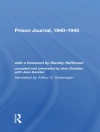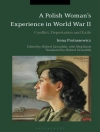In ‘Letters to Madame Hanska, born Countess Rzewuska, afterwards Madame Honoré de Balzac, 1833-1846, ‘ Honoré de Balzac offers an intimate glimpse into his emotional landscape through a series of heartfelt correspondences with his lifelong love, Madame Hanska. These letters are not merely romantic missives; they serve as a testament to Balzac’s literary style—marked by meticulous observation and philosophical reflection. They reveal the inner workings of a master chronicler of society, navigating the complexities of love, ambition, and artistic aspiration while also reflecting broader historical and cultural trends of 19th-century France. Balzac, a pivotal figure in literary realism, wrote extensively about the social dynamics of his time, drawing on his personal experiences to inform his characters and themes. His passionate devotion to Madame Hanska—whom he met through their shared literary circles—was a significant influence in his life and work, melding the personal and the artistic in a unique way. This correspondence provides crucial insight into the motivations behind some of Balzac’s seminal works, highlighting his struggle between his literary commitments and personal aspirations. I highly recommend ‘Letters to Madame Hanska’ not only for those interested in Balzac’s oeuvre but also for anyone intrigued by the intersections of love and literature. This collection not only exposes the vulnerabilities of a literary giant but also illustrates the timeless nature of human relationships, making it a valuable read for scholars and romantics alike.
About the author
Honoré de Balzac was a towering figure in French literature, renowned for his multifaceted character studies and an intrinsic part of the 19th-century literary movement of realism. Born on May 20, 1799, in Tours, France, Balzac’s work reflects a profound psychological insight and a depiction of society that remains unparalleled. He is best known for ‘La Comédie Humaine’, an ambitious series of interlinked novels and stories depicting French society from the fall of the Napoleonic Empire to the July Monarchy. Balzac’s keen observation and innovative literary techniques have established his reputation as one of the founders of the realist tradition. He was an extremely prolific author, writing scores of novels, short stories, and plays. His oeuvre is characterized by an extensive and penetrating exploration of the complexities of human nature and society, rendered through a grand tapestry of characters, each reappearing in multiple novels, weaving a richly textured social fabric. Among his most celebrated works are ‘Père Goriot’, ‘Eugénie Grandet’, ‘Lost Illusions’, and ‘Cousin Bette’. Balzac’s personal life was as dramatic and varied as his fiction. His correspondence with Madame Hanska, a selection of which is captured in ‘Letters to Madame Hanska, born Countess Rzewuska, afterwards Madame Honoré de Balzac, 1833-1846’, provides not only insight into his creative mind but also his romantic nature. Honoré de Balzac died on August 18, 1850, and his legacy continues to inspire and influence writers around the world.












